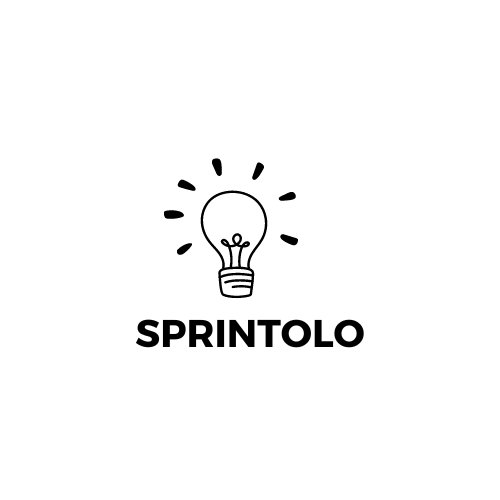In the software role tech world, standing out means more than just a resume. Today, tangible proof of your skills, creativity, and achievements is the need of the hour. Whether you are a new developer, an experienced engineer, or transitioning into tech, a thoughtfully curated portfolio showcases your journey, growth, and talent in a way a resume can’t. Here’s a step-by-step guide on building a strong software portfolio that makes a memorable impact.

- Pick the Best Platform First things first: where will your portfolio be? Some of the popular options are GitHub, GitLab, and Bitbucket, but hosting your website on platforms like GitHub Pages, Netlify, or even on a custom domain lets you be creative when showing off your projects. However, the industry favorite GitHub only speaks to the quality and your experience in regards to version control and also team-based coding, although it would be greater by making more customized personal sites of display that really show your best works. Ideally, having an outstandingly well-done and managed GitHub as a highly attractive website which truly can best serve you -in terms of reach but still with versatility.
2. Select Strong Projects for Software role
Quality over quantity. Do not list all your projects. Choose the best 3-5 that will represent your skill sets. Show good variance within your portfolio, if relevant; if you are trained on front and back ends, make sure to exhibit samples of each. In addition, repeat this practice with Java and Python as you highlight skills, keep variance low.
Work on the projects that are novel, problem-solving, or innovative. For instance, developing a personal project based on API to solve real-life issues will be much more persuasive than a “To-Do List” application. Each project must clearly highlight your technical as well as creative skills.
3. Explain Each Project Context for Software role
Each project of your portfolio should have a small, however, comprehensive description of answering key questions:
- Motivation: What problem were you trying to solve, and why?
- Technologies Used: List languages, frameworks, and tools
- Challenges Faced: Main problems you encountered and how you resolved them
- What Did You Learn?: Identify what you learned from the project
- Visuals: Attach screenshots, links to live demos, or short videos demonstrating the functionality of the project for easy visualization by the potential employer.
This brings depth to sharing the story behind every project so that you are seen to be thinking through and being intentional.
4. Show Open Source Contributions for Software role
Demonstrate your coding skills. Demonstrate your ability to work collectively and adhere to best practice. Choose projects that are specific to your field or relevant to the tech community. Go for meaningful contributions, as applicable—bug fixes, documentation, feature development, or code optimization.
Include links to the open-source contributions you make to your portfolio, and briefly describe your role in the project and the impact you made. These are examples of how you will continue to learn and engage with the tech community at large.
5. **Write Clean, Documented Code
Your portfolio is not just about the final product; your code quality is equally important. Hiring managers will often browse your repositories to evaluate your coding style, organization, and clarity. Here are some tips for making your code professional:
- Use Descriptive Names: Avoid generic names like x or data; instead, use meaningful names that explain the variable’s purpose.
- Comment Wisely: Comment when it is completely necessary, otherwise, let the code speak for itself.
- Consistent Formatting: Use the same indentation, naming convention and general structure
- Write Tests: This makes it obvious you have put some care into it as well as shows that you do know what is a best practice
Code written neatly and commented clearly lets the reader trace through your ideas, and hence it reveals the fact that you actually have attention to details.
6. **Include a Blog or Case Study Page
Add a blog or case study section to your portfolio site to set you apart. It could be a writing on the projects, new technologies, or unique problem-solving techniques to showcase knowledge and communication skills that provide hiring managers insight into your technical thought process.
You don’t need to be a professional writer; you can explain complex topics in simple language. If possible, try writing one post per month to keep continuity. Even a few well-written articles or tutorials will boost your portfolio’s credibility.
7. Add Resume and Contact Information
Ensure that your portfolio includes an updated resume that sums up your work experience, education, and technical skills. Also, include an easy way to get in touch with you by including a contact form or email address and linking your LinkedIn and GitHub profiles.
8. **Ask for Feedback and Iterate Endlessly
Once your portfolio is live, go around asking friends, mentors, or tech communities for feedback. Constructive criticism will help you fine-tune the presentation and jog your memory on gaps that might have slipped your eye while creating it. Look at your portfolio as a living document which, like you, will grow and evolve with experience, learning, and new projects. Your periodic updates will reflect your newfound skills and accomplishments.
Conclusion
Building a portfolio takes time, but this is an investment that could open doors in a highly competitive job market. Imagine it as a personal brand statement—a reflection of skills, creativity, and how you approach problems. It’s a story of your journey in tech through carefully curated projects, clean code, and personal touches like a blog.
A good portfolio doesn’t say but shows. Take the time to build something that authentically represents your best work. Good luck, and happy coding!
